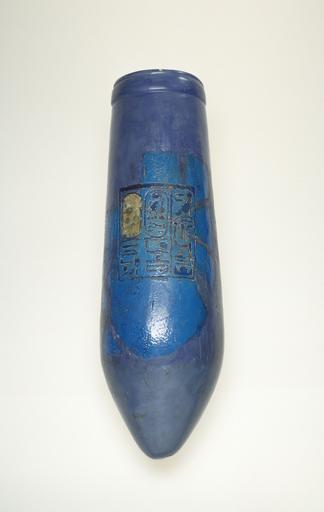MAKE A MEME
View Large Image

| View Original: | Egyptian_-_Situla_with_Erased_Cartouche_of_Akhenaten_-_Walters_48456_-_Profile.jpg (1137x1799) | |||
| Download: | Original | Medium | Small | Thumb |
| Courtesy of: | commons.wikimedia.org | More Like This | ||
| Keywords: Egyptian - Situla with Erased Cartouche of Akhenaten - Walters 48456 - Profile.jpg Situlae were vessels used to pour offerings of milk or water in purification rituals They take the form of a human breast and were associated with the goddess Isis Situlae were found in temple treasuries at Amarna the city built by the pharaoh Akhenaten to honor Aten the sun-disk deity This vessel continued to be used after the demise of Akhenaten and the king's birth name has been erased It has a central field containing three columns of inscription executed in dark blue glaze between 1351 1334 BC Amarna faience with blue glaze cm 30 48 10 8 accession number 48 456 1897 Rev William MacGregor Collection Sale Sotheby's London 1922 no 268 Dikran Kelekian Paris and New York date and mode of acquisition unknown Henry Walters city Baltimore Walters Art Museum Henry Walters Acquired by Henry Walters 1923 Translation High priest of Re-Harakhty who rejoices on the horizon Nefer-kheperu-Re Wa-en-Re who satisfies Re in his temple Akh-en-jth whose lifetime is long Pharaohs of the Sun Akhenaten Nefertiti Tutankhamen Museum of Fine Arts Boston Boston; Los Angeles County Museum of Art Los Angeles; The Art Institute of Chicago Chicago; Rijksmuseum van Oudheden Leiden 1999-2001 place of origin Egypt Walters Art Museum license Ancient Egyptian pottery in the Walters Art Museum Cartouches of Akhenaten Amarna art Damnatio memoriae in ancient Egypt Situla | ||||